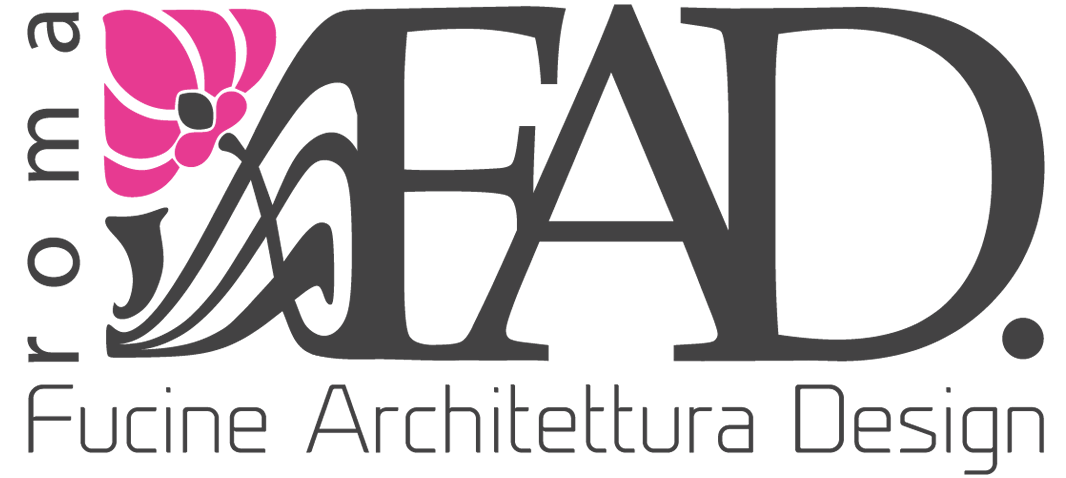The garden of the soul
Location: Rome
Area: 250 Smq
Client: Private
Project time: 2015
Designing a garden is not as simple as it seems; it is a true art, made of a millenary history and specific techniques, that have led to the creation of spaces increasingly unique and inimitable, over the centuries.
This is why, to better understand our design, we must do a dive into the past that will allow us to better understand the meaning of specific aesthetic and functional choices that we have made for this project.
In the Middle Ages gardens had a square or rectangular shape with pergolas, pavilions and - above all - an area known as "the simple garden", where fruit trees, vegetables and herbs were cultivated. The Italian garden, which represented the natural continuation of the building in the surrounding space, was born in the seventeenth century.
Stiffed geometric hedges and shaped trees mirrored the internal walls and pillars of the buildings, alternated to fountains, paths and uneven ground.
The romantic style gardens were born in 1600 with the aim of imitating the nature thanks to a "spontaneous" design: symmetry is no longer used in favour of open spaces with lawns, hills, and ponds, to recreate a true natural environment.
To date, the garden is both an ornament of our homes and a liveable outdoor space even in the city, with consequent benefits to our psychophysical health. The current design of gardens is a mix between stiff and free aesthetic features.
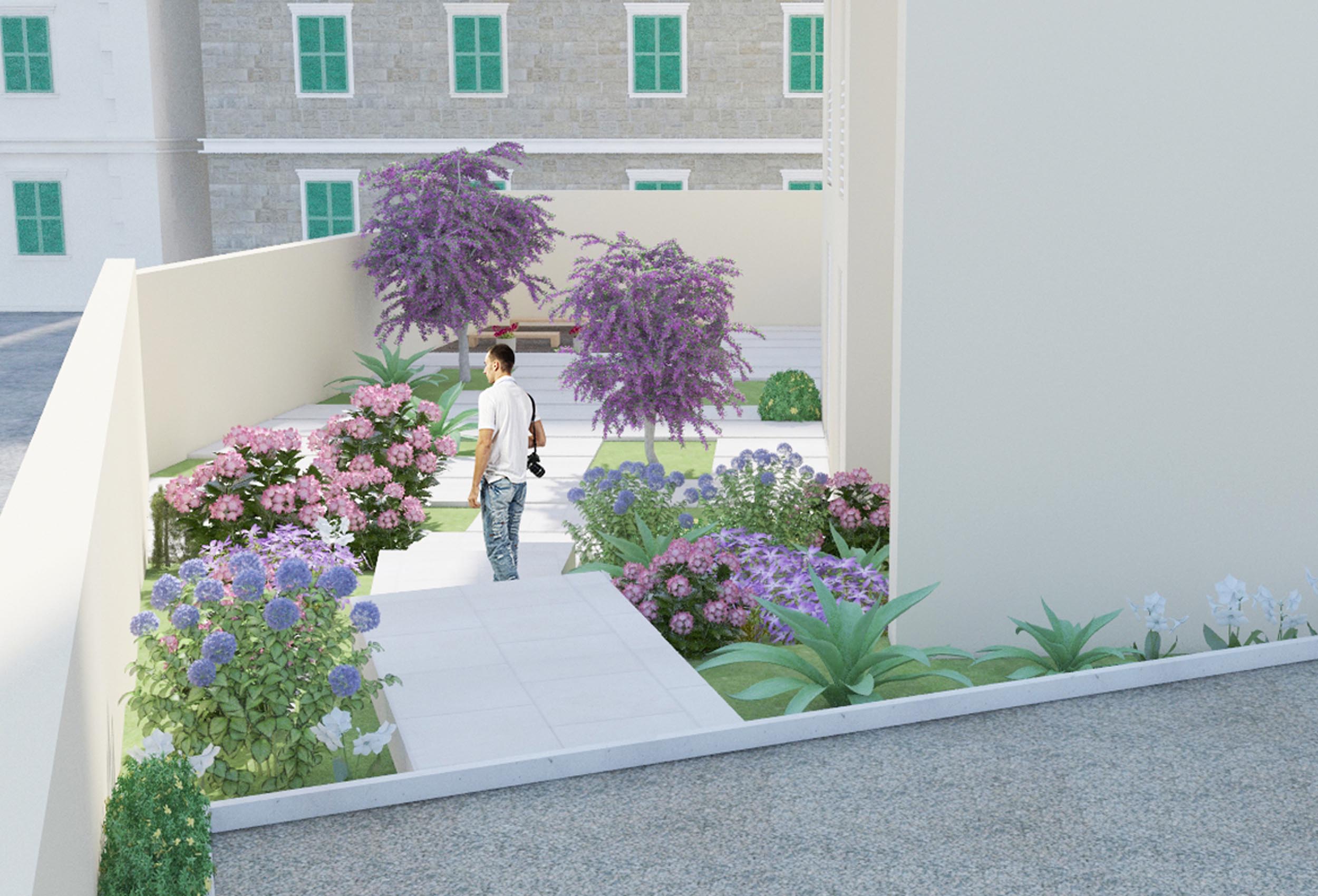
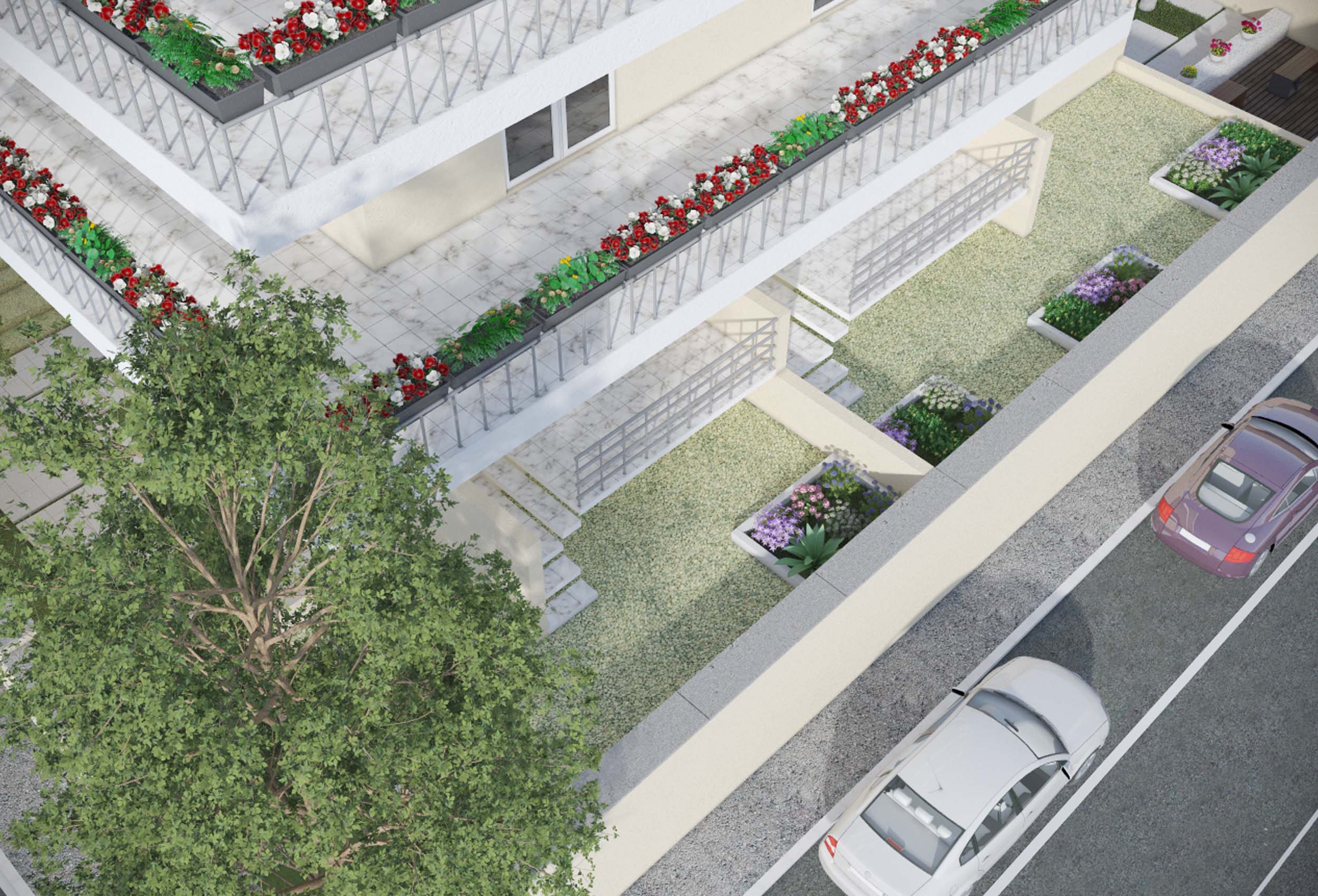
For this project, we designed two extremely different designs but characterised by the same objective: a high functional and aesthetic quality, considering the context and without impacting the trees already present, such as the cedar of Lebanon and the cypresses.
The idea of the first solution was to create spaces suitable for the various essences arranged with a "checkerboard" layout, according to the modern trend of greenery layouts.
We wanted to create a space that could be defined as a "peaceful corner", that is an outdoor area set up and designed to be used by the residents: this space was designed with outdoor equipment and the leading paths are intimate and well-finished.
The presence of green screens and LED light cuts allow their use even in the evening. Flooring, where necessary, was designed as an alternation of brushed limestone slabs (travertine or botticino) and small grass areas (planted with Bent grass or Dichondra).
In another part of the garden, we recreated flower beds with a regular subdivision of the essences, to recall the ancient Roman gardens defined by vegetation such as the Verbascum “Clementine”, the Stipa Tenuissima, or the Aquilegia Striata
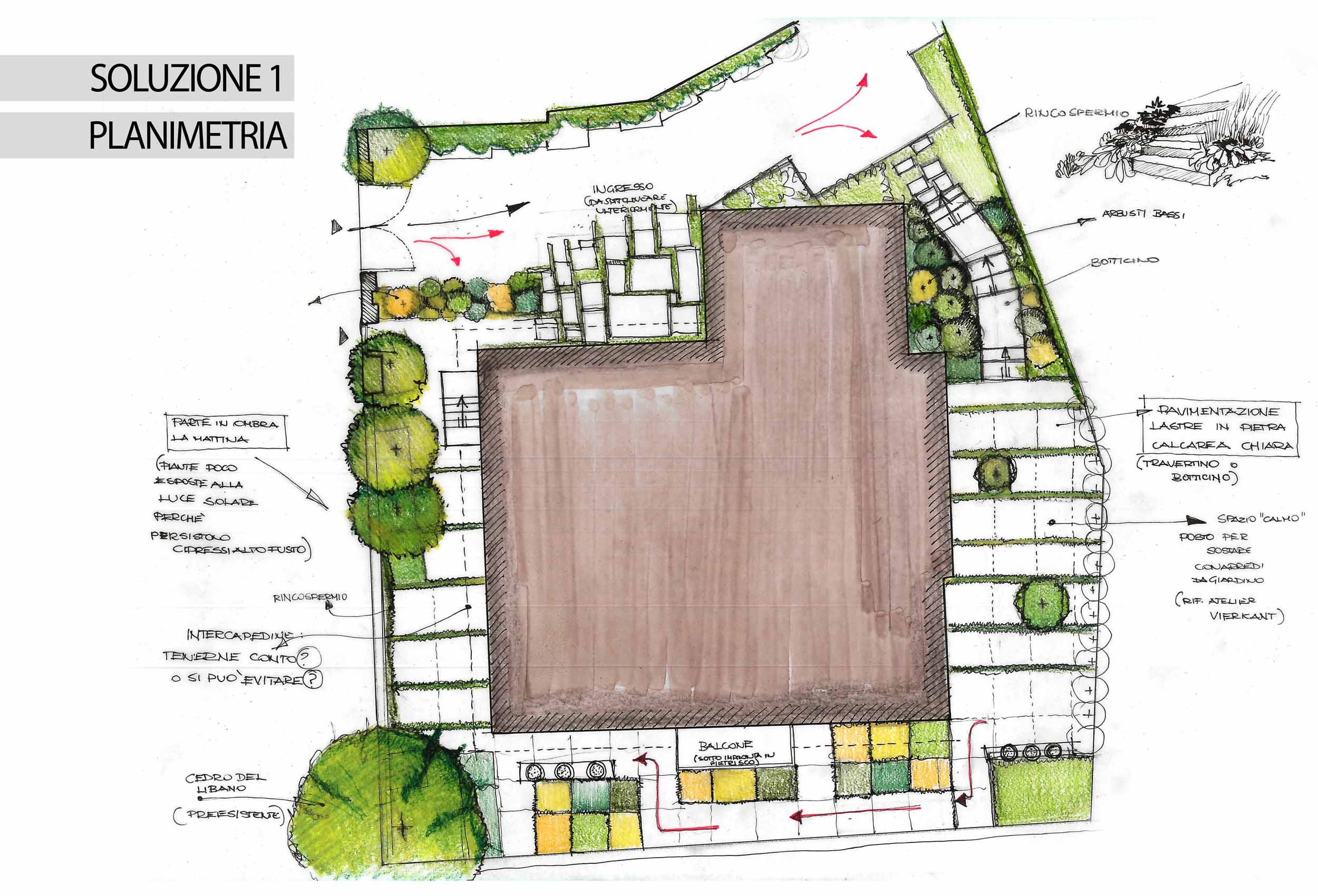
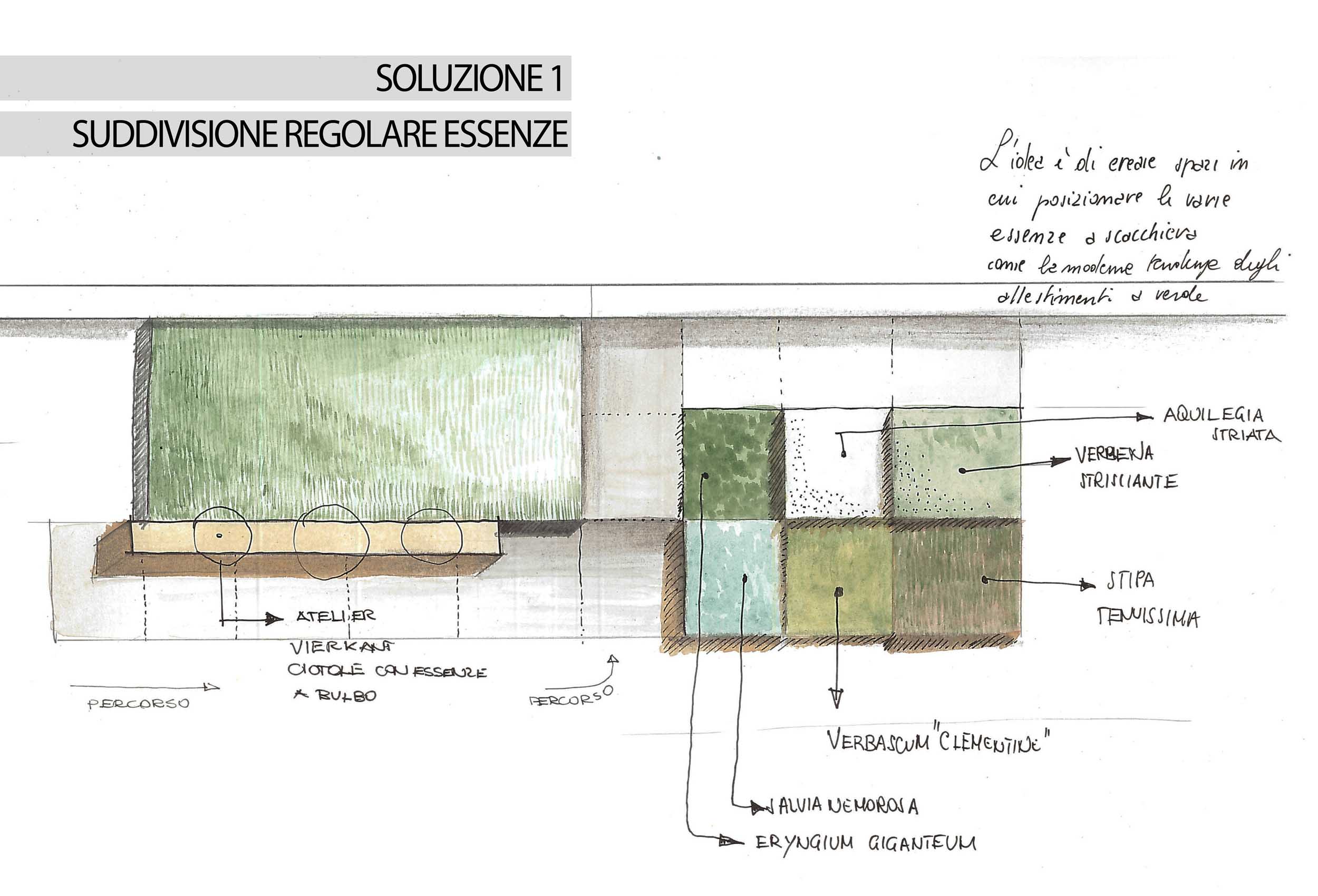

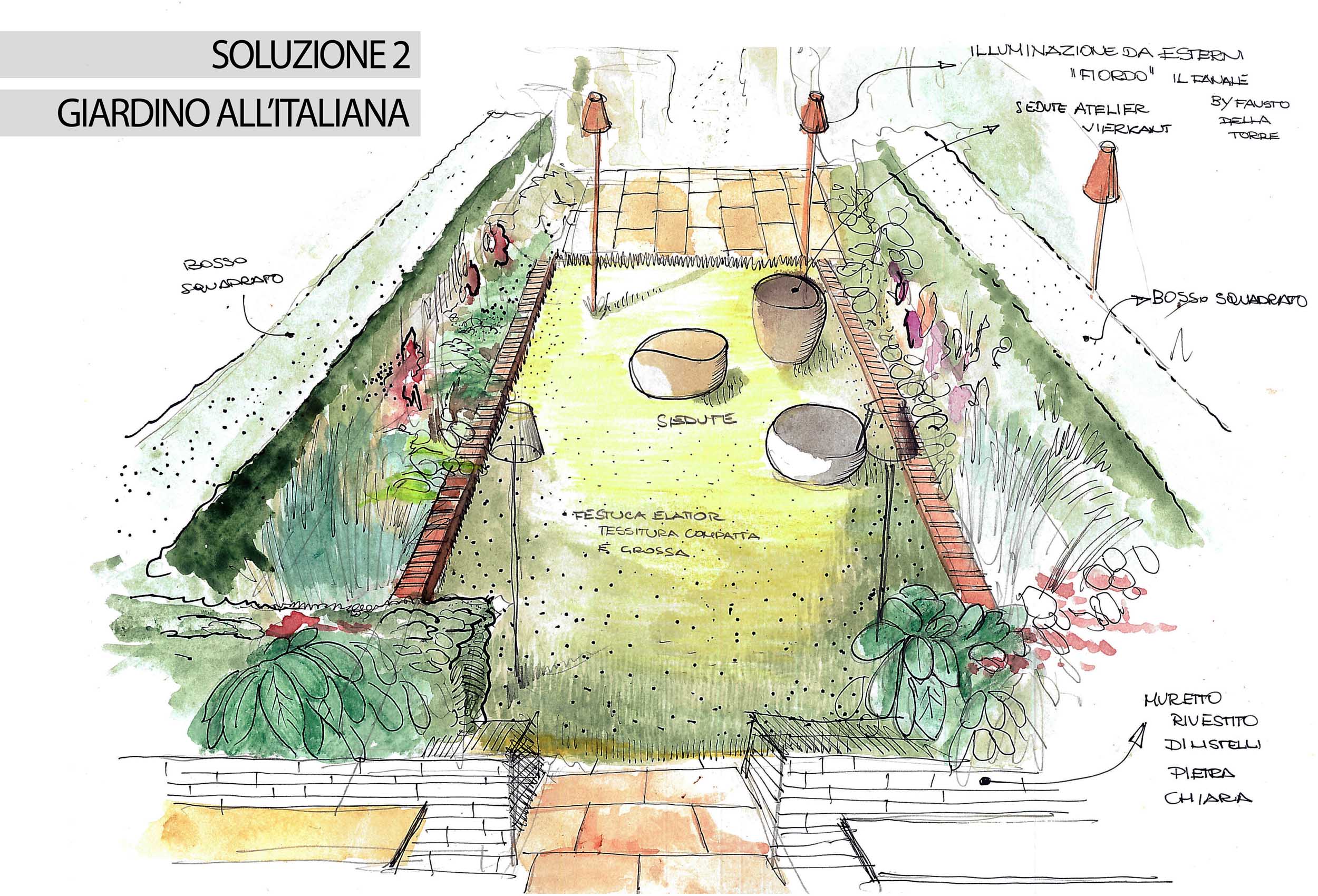
The second solution too is characterised by the presence of a "peaceful corner", suitable for evenings and afternoons outdoors.
This solution is identified by the geometric characters of the old Italian gardens modernised by the presence of some contemporary features.
A space delimited by masonry planters and enriched by a beautiful boxwood with geometric and linear shapes was created in an area of the garden.
A lush and colourful vegetation develops along the edge of the area while the centre is embellished by the presence of a beautiful lawn; lighting fixtures and design seats complete the arrangement resulting in a great scenic effect. We have decided to add the checkerboard garden of the ancient Roman gardens also to this second solution, to quote the history with a touch of delicacy.
The correct choice of the essences was fundamental in both solutions; they have been chosen according to their chromatism and sun exposure. Plants that do not like direct sun exposure have been planted in the shady parts, while those that need a lot of sunlight have been planted in the most open areas; the result is a unique garden with a "wow" effect!
